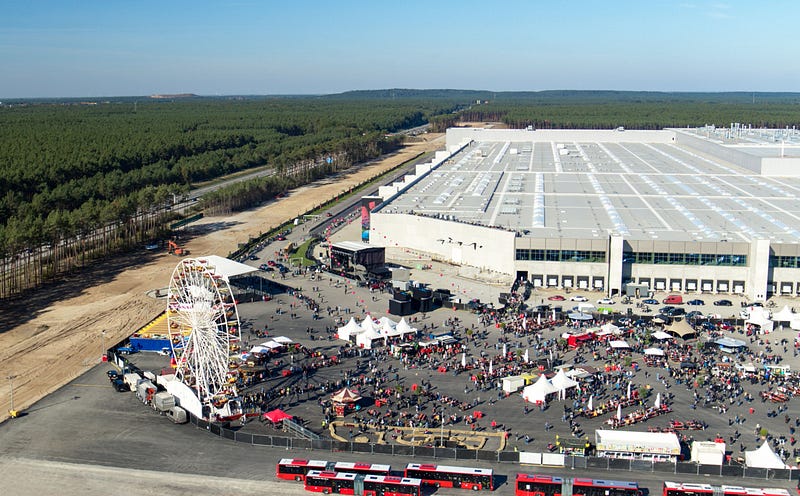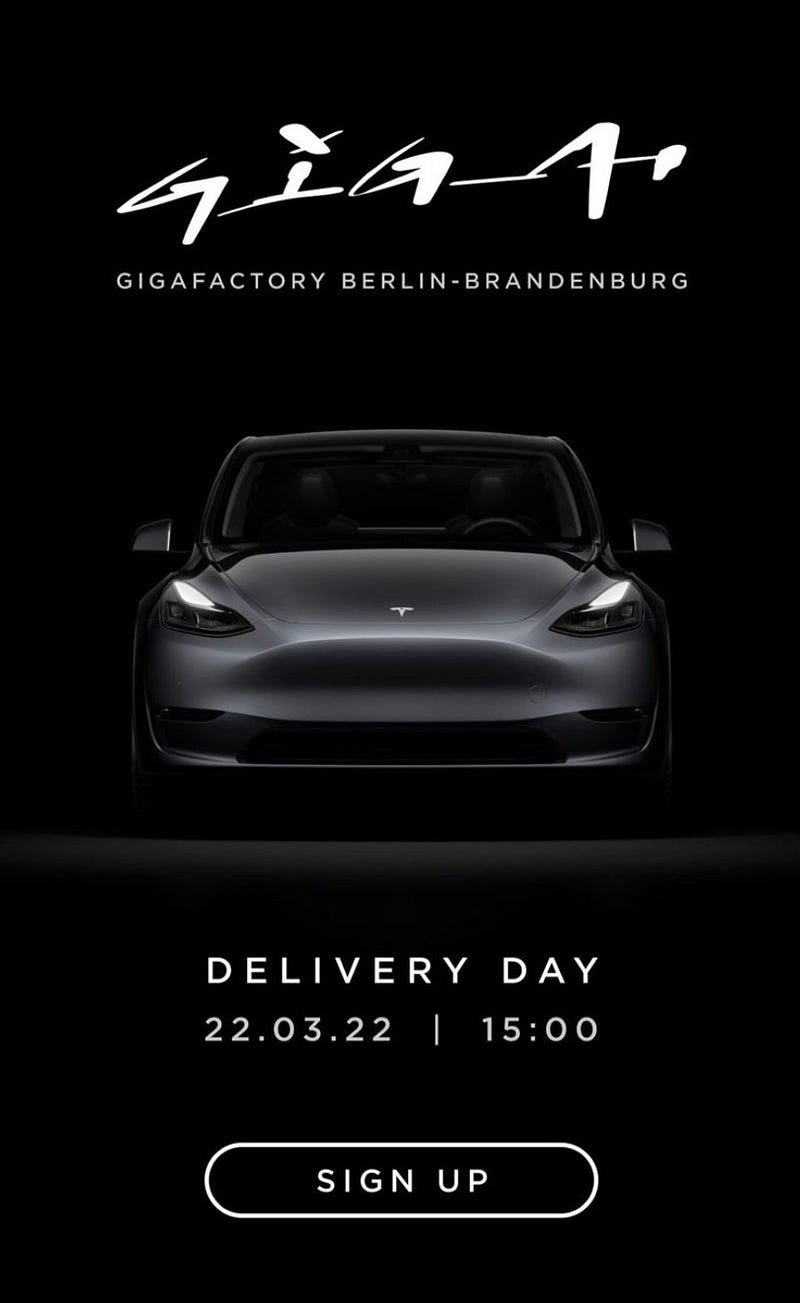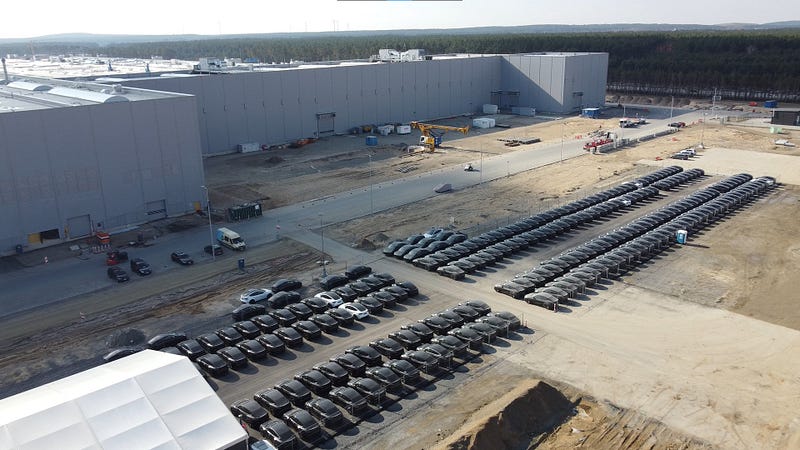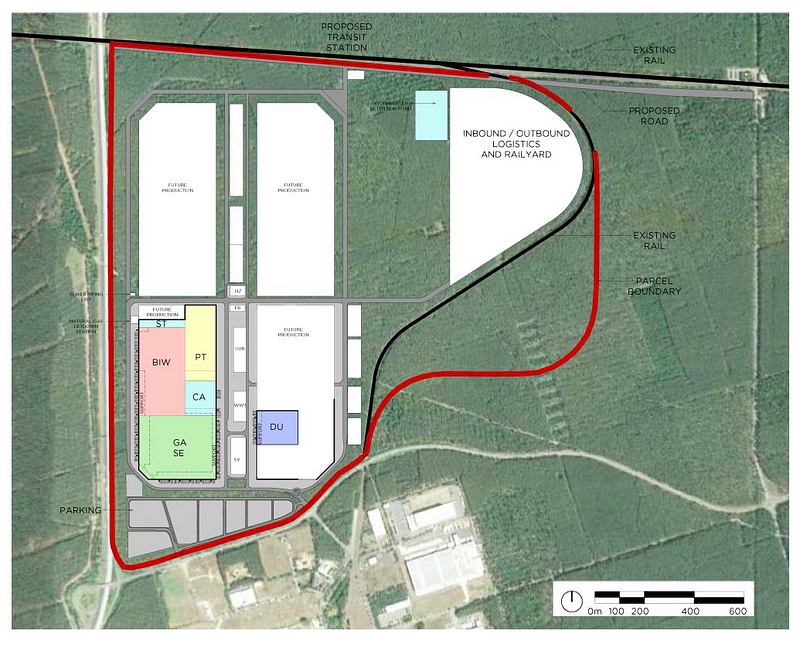Gigafactory Berlin: Are Production Numbers Being Downplayed?
Written on
Chapter 1: Giga Berlin's Production Capacity Overview
Is Tesla intentionally underestimating the production capability of its Gigafactory in Berlin? Insights from Elon Musk and remarks made during investor calls suggest that the factory's production capacity is projected at approximately 500,000 units annually. However, various data points lead many in the media to believe that this estimation is grossly understated.

The Gigafactory Berlin-Brandenburg, situated in Grünheide, about 20 miles southeast of Berlin, was announced by Elon Musk in November 2019. Construction commenced in May 2020, with an initial opening date set for July 2021. However, environmental and legal hurdles delayed progress, with the final permit being issued in March 2022. The first deliveries are anticipated for March 22, and the facility aims to ramp up to a production rate of 5,000 vehicles per week by year-end.

Production Ramp-Up Expectations
For several weeks, sightings of Model Y vehicles parked outside the factory have been reported, presumed to be Long Range and Performance versions based on visible features in drone footage.

During the January investors' call, Elon stated that production would gradually increase to 5,000 cars by the end of 2022, with an ambition to double this to 10,000 units weekly by the following year. According to a tweet from Sawyer Merritt on March 4, citing @TroyTeslike, regular production might start at around 500 vehicles per week, with a target of reaching 1,000 units by late April 2022. A second shift is planned for June, alongside a three-week shutdown to transition production lines from 2170 to 4680 batteries later in the year. With two gigapresses capable of producing castings for 2,500 units per week already installed, the pathway to achieving Elon’s 5,000 units per week goal seems plausible. However, two additional gigapresses are expected to be needed to sustain this production level.
Capacity Expansion Potential
The exact vehicle models to be produced at the Berlin facility, aside from the Model Y, remain unclear. While the Model 3 has historically been Tesla's bestseller, the Model Y is projected to surpass it this year. Speculations also linger about whether a future smaller, more affordable model will be manufactured at this site, but little is known beyond previous mentions during Battery Day in September 2020.
Nonetheless, the 500,000 units per year estimate seems insufficient when compared to the current and projected production rates from Tesla's Shanghai factory. As of early 2022, the Shanghai factory was running at an annualized rate of around 700,000 units, with about 500,000 designated for the Model Y.
As discussed in the Tesla Economist's YouTube video, it is reasonable to theorize that Tesla could achieve similar output levels in Berlin. The Shanghai Model Y factory occupies approximately 0.13 km², while the Berlin facility covers about 0.2 km², indicating a size increase of over 50%. Additionally, the Berlin factory requires 300 fewer robots and processes due to its usage of front die casting molds. This raises the question: shouldn’t we anticipate a potential production capacity double that of Shanghai? If Shanghai's Model Y factory can potentially reach a million units, could Berlin's capacity also approach two million vehicles annually, given that new manufacturing techniques only require a 30% improvement to achieve this?
The Tesla Economist video also mentions a speculated capacity of Berlin’s battery plant at up to 250 GWh per year, sufficient for 3.5 million vehicles using 4680 cell packs, which are specifically designed for automotive use, not energy storage.

Conclusion
All signs indicate that Gigafactory Berlin's ultimate production capacity will likely exceed the initially estimated 500,000 vehicles annually, based on its footprint, gigacasting capabilities, and battery production potential. The question remains: why does Tesla refrain from presenting more ambitious projections for this factory? Could it be linked to stock value concerns or competitive positioning? What are your thoughts on this?
If you found this article interesting, you may also enjoy reading about Tesla’s Gigafactory in Berlin, which has recently commenced production, marking a significant shift in the automotive landscape.
Video Description: This video discusses the potential underestimations of Giga Berlin's production capacity and what it could mean for Tesla's future.
Video Description: This video highlights overlooked insights from Tesla's earnings, shedding light on the company's strategic decisions and production forecasts.